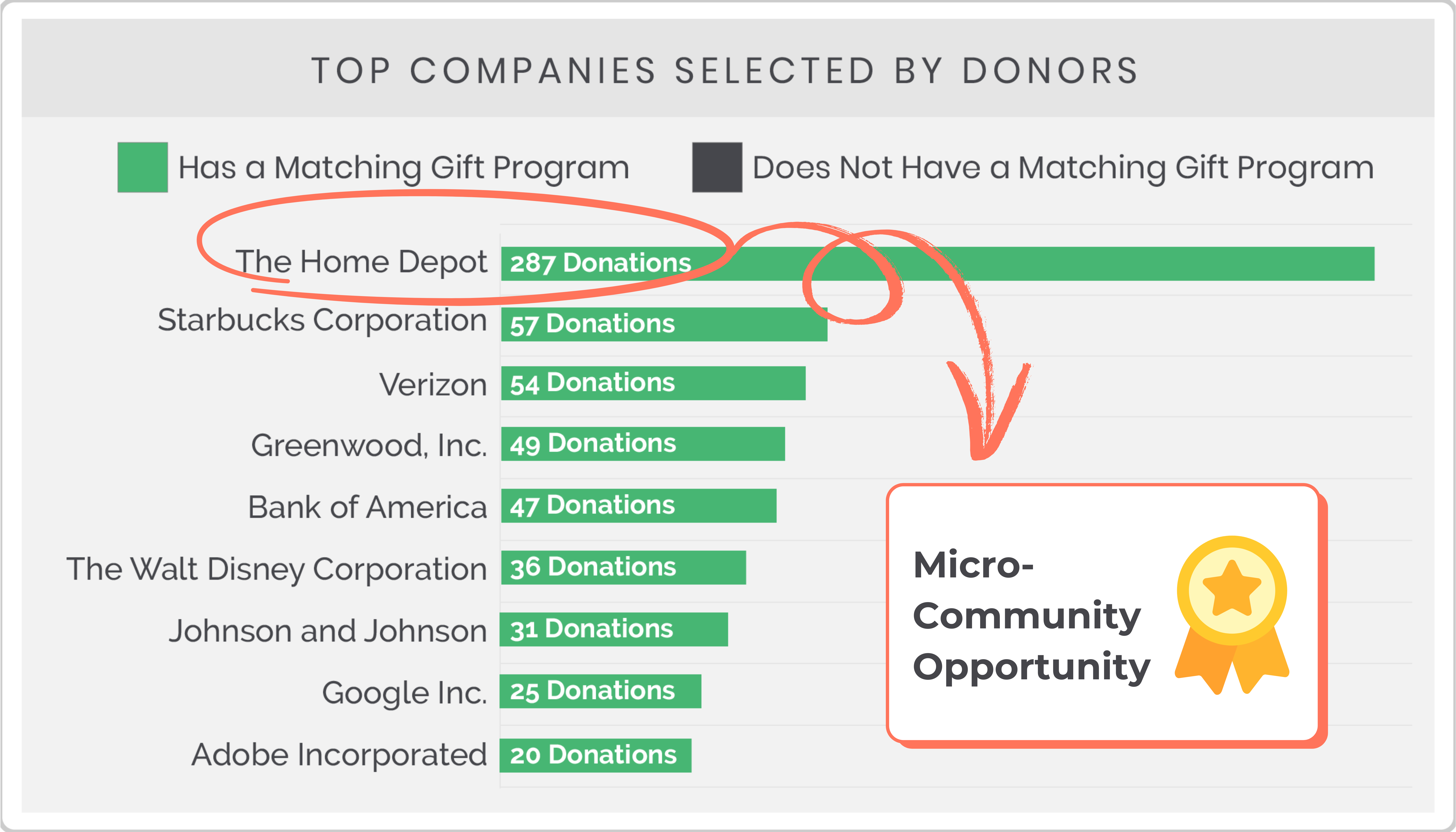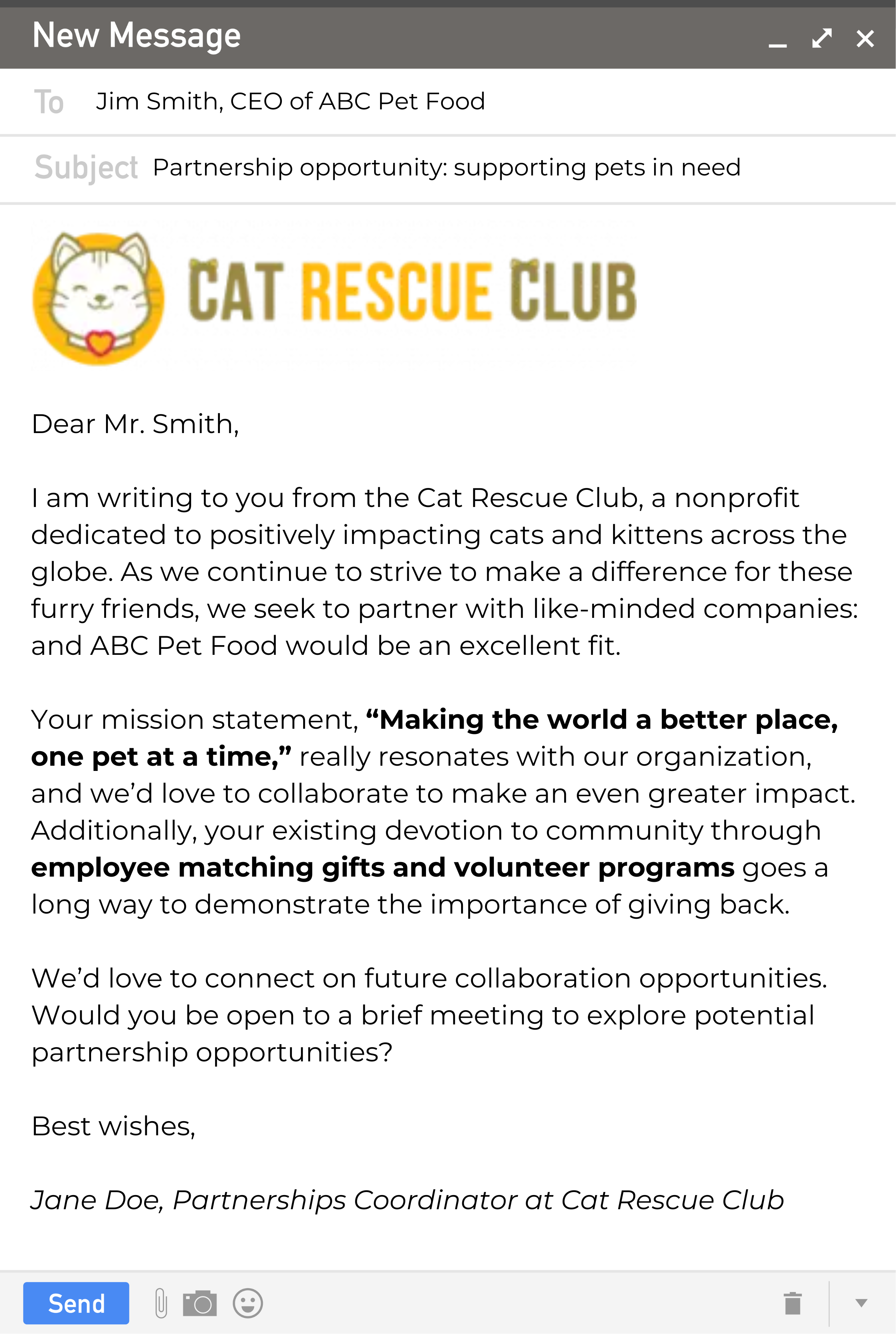Nurturing Micro-Communities with Employer Collaboration

This blog was written in collaboration with the team at Double the Donation, an online donation matching tool built to amplify nonprofit fundraising.
Fostering community is an integral part of nonprofit operations. However, we may need to reframe our thinking about community to obtain a bigger-picture understanding of the concept. According to Soraya Alexander, President of Classy from GoFundMe and COO of GoFundMe, “Community should be considered a verb—not literally, but in the way that it fosters connected constituents.”
So how can you promote community in action in a way that rallies supporters, creates engagement and connection, and ensures those who get involved become deeply committed to your cause? It helps to start small—with micro-communities.
In this guide, we’ll provide an overview of everything your team needs to know about forming and nurturing micro-communities and how employer collaboration can go a long way in doing so.
What’s inside:
- Using employer data to identify micro-communities
- Qualifying the potential of micro-community-led partnerships
- Researching companies represented in your micro-communities
- Nurturing strong, personalized corporate relationships
- Putting it into action: 3 examples of collaborative micro-communities
To begin, we’ll remind you how utilizing employer data can help identify and build these micro-communities. By tapping into existing supporter networks and corporate relationships, your organization can foster meaningful connections that spark engagement and grow your cause from within.
Using employer data to identify micro-communities
In a collaborative blog post with our friends at Double the Donation, How to Uncover Micro-Communities with Employer Data, we explored how tapping into employment information can help nonprofits form and engage micro-communities within their supporter base. As a brief refresher, here are a few best practices we covered:
- Collect employment information as donors give. Embed Double the Donation’s matching gift search tool directly into your Classy giving forms.
- Identify and analyze trends in employment data. Locate trends and uncover potential communities. 360MatchPro provides a handy Top Companies report.
- Encourage connections between donors in like communities. Offer exclusive opportunities for group engagement.

If you don’t currently collect employment information from donors as they give, don’t fret. An employer append—or data enhancement service—can help you fill in the gaps in existing supporter records. Then, use that information, along with donor-collected insights, to identify and pursue your greatest opportunities.
Qualifying the potential of micro-community-led partnerships
Once you’ve identified potential micro-communities in your network, establish a plan for qualifying the value each could bring to your cause.
Essentially, you’ll want to use employer data to deepen existing relationships with companies that have a large presence in your donor base and uncover new fundraising opportunities through those employers. When considering the potential value of a prospective corporate relationship, analyze the partnership using the following criteria:
- Existing relationship strength: Have you run similar projects with the company in the past? How successful were the previous initiatives?
- Example: In a previous year, company A sponsored our spring peer-to-peer fundraising event. This means they’ve shown support in the past and may do so again.
- Employer industry: In what business sector does the company exist? Is the industry known for its dedication to philanthropy?
- Example: Technology and financial services businesses are some of the most likely to offer corporate giving programs. If company A falls into one of these categories, they may be more likely to get involved.
- Level of CSR involvement: Does the company have any existing corporate social responsibility efforts? Are there any notable giving programs offered (like matching gifts, volunteer grants, or volunteer time off)?
- Example: Company A is a well-known matching gift company with a lofty maximum threshold and a generous matching gift ratio. This demonstrates the company’s ongoing commitment to social good, which you can use to your advantage when pitching a partnership.
- Philanthropic affinity: If the company has a history of philanthropic engagement, has it supported similar causes to yours? Does anything in its values or mission statement reflect an affinity to support your organization?
- Example: Company A (a dog food company) has a well-documented record of contributing to organizations focused on animal welfare. Organization B, a local pet shelter, would be a great fit for a partnership.
Researching companies represented in your micro-communities
After qualifying your greatest opportunities, you’ll want to take a closer look at leading employers represented in your micro-communities. The more you understand their values, goals, and opportunities for collaboration, the better you can engage with the companies and their employees.
As you begin your research, focus on elements that can inform partnership conversations. As with any partnership pitch, it’s integral that you center your proposal around mutual benefits—such as goals or projects that will bring substantial value to both teams.
So where should you start your efforts? We recommend considering a company’s:
- Mission statement and core values
- Public statements or press releases
- Marketing campaigns
- Customer demographics and overlapping audiences
- Employee engagement programs
- And more
By thoroughly researching these aspects of a company’s business practices, you’ll gain valuable insights that can help tailor your outreach and position your organization as a strategic partner. This groundwork will pave the way for meaningful, reciprocal collaborations.
Corporate partnership examples and adviceNurturing strong, personalized corporate relationships
At this point, it’s time to initiate those corporate relationships. Now that you have their employees’ support, you’ll need to garner leadership approval and begin a partnership or offer another meaningful opportunity to enrich your existing relationship.
As you begin drafting your first round of outreach, consider the following factors:
- Personalize your collaboration proposals as much as possible. To ensure your message stands out, it’s a good idea to tailor your pitch to each prospective partner. Feel free to reference the elements highlighted above—from mission statements to current giving programs and beyond.
- Mention the philanthropic benefits of a partnership. Remember to focus on the advantages to your potential partner more than your organization. This can include cause alignment, enhanced marketing visibility, and employee engagement—especially when you consider the micro-communities that may already exist.
- List relevant collaboration opportunities. Corporate partnerships can take many forms, but you’ll want to provide real and relevant examples of ways these companies can get involved. This can include cause marketing campaigns, in-kind donations, event sponsorships, and more—the opportunities are endless.
Check out this example of a proposal message personalized to the recipient:

Putting it into action: 3 examples of collaborative micro-communities
When aiming to establish employer micro-communities and strengthen your nonprofit’s reach, look to real-world examples to provide valuable insights and inspiration. See how other organizations have successfully collaborated with companies in their networks and identify key strategies to apply to your efforts.
Example #1: LLS + Danaher Corporation
Danaher Corporation, an American global conglomerate company, partnered with the Leukemia & Lymphoma Society to offer a unique matching gift program that supported employees’ peer-to-peer fundraising efforts.
The partnership, which grew from Danaher’s existing employee engagement with LLS’s mission, involved the formation of a corporate team participating in LLS’s Light the Night Walk fundraising event. Team members were encouraged to collect donations on behalf of the organization, and the company doubled employees’ fundraising totals through a one-off matching gift partnership.
This initiative not only encouraged greater employee participation but also fostered a sense of purpose and unity within the company, as employees saw their efforts directly benefit a cause they cared about in greater ways than otherwise possible.
Example #2: Habitat for Humanity + Nissan
Nissan, a multinational automobile manufacturer, has established a partnership with Habitat for Humanity based on a strong foundation of employee volunteerism. Over the years, Nissan employees have donated more than 100,000 volunteer hours to help build new homes for families in need.
This long-standing partnership developed from Nissan employees’ desire to engage in hands-on community service projects. Nissan’s corporate social responsibility program supported this employee-driven interest, providing opportunities for teams to volunteer together and strengthening the connection between employees, their local communities, and Nissan’s broader commitment to social good.
Example #3: Field of Dreams + Apple
Apple, a consumer electronics company with a significant presence worldwide, has fostered a meaningful partnership with one nonprofit, Field of Dreams, Inc. What started as a series of ad hoc volunteer experiences for Apple employees has developed into a weekly initiative spanning several years of community service.
The partnership has strengthened employee engagement by aligning with their interests while also reinforcing Apple’s commitment to making a positive social impact in the communities where its employees live and work.
Next steps for success with employer micro-communities
By identifying and nurturing employer-based micro-communities within your supporter base, you can unlock the potential for deeper engagement, stronger corporate relationships, and long-term advocacy. Collaboration with donors’ employers can go a long way in amplifying your mission, as these partnerships create a powerful ripple effect—extending your cause into wider networks.
To take full advantage of these opportunities, consider powering your efforts with Double the Donation and Classy’s seamless integration. By connecting your supporters with micro-communities and maximizing corporate partnerships with the right tools, you can drive an even greater impact on your mission.
Copy Editor: Ayanna Julien

Drive greater impact with Classy and Double the donation
Subscribe to the Classy Blog
Get the latest fundraising tips, trends, and ideas in your inbox.
Thank you for subscribing
You signed up for emails from Classy
Request a demo
Learn how top nonprofits use Classy to power their fundraising.



